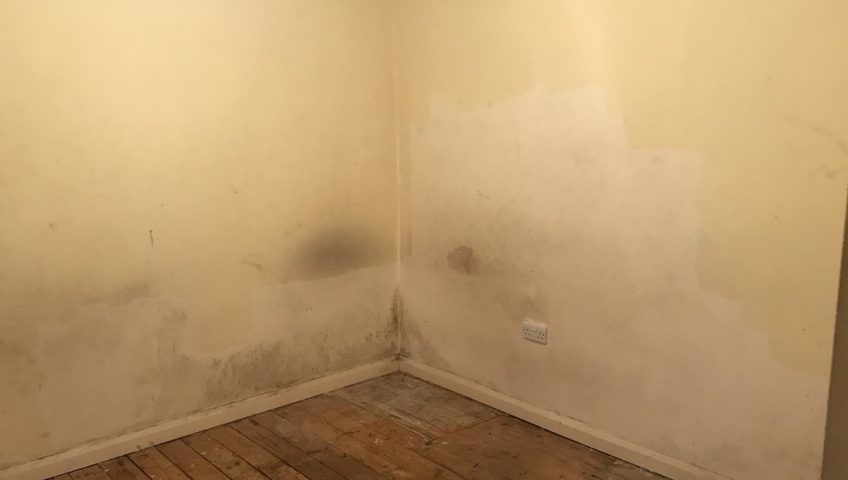
How to identify a damp problem in the house
Damp House Problems
Living in a damp house can be very dangerous and cause serious health issues. As such, a little leak is something that should not be ignored. Although you might not be able to notice the immediate water damage, bacteria and mould growth can start within a short time of water intrusion. In addition, damp homes have been found to cause respiratory illnesses and are a conducive place for breeding parasites and bacteria. Find out how to identify damp in your home with London Damp Specialists.
It is, therefore, essential to ensure that your property is well kept and regularly inspected to prevent you and your family members from getting sick. The following are different ways to help you know whether your home is damp:
Condensation
Condensation on a window is an indication of a damp house. Excessive condensation may signify too much water vapour in the home and indicates a damp problem or poor ventilation. It is essential to check your house regularly to avoid exposing your family to the health problems associated with overly damp properties.
Black mould
Black moulds are another thing that you will notice in a damp house. Moulds are usually life-threatening since they can cause severe diseases, especially in those people with lung conditions. Make sure that you carefully check the entire isolated ceiling, walls, door frame, and window to avoid causing more problems.
Tide marks and stains on the wall
Leaking pipes and overflowing gutter are usually the cause of damp patches on the wall. The wet patches can appear at any point or place on the wall. The tide marks are often caused by salts and evaporation from the ground. You will likely notice the tide up to 1 meter above the skirting board. Another common sign is staining if you fail to see the tide marks. The stain is usually yellowish or brownish and is caught up to 1 meter above the skirting board. Colours make the wall appear untidy and unattractive. Call a technician to come and examine your home to avoid getting more damage.
Salts within plaster
White fluffy deposits in the form of salt signify rising damp in your house. These salts can cause a lot of blistering patches on your walls. These white patches can destroy your wall leaving you with a financial burden.
Peeling the wallpaper
If you notice that the wallpaper is coming off or peeling from the wall, that is an indication of damp. The wallpaper also starts becoming loose starting from the corner. Due to the moisture in the wall, the wallpaper becomes open from the skirting board, making the wallpaper turn or curve up.
Decayed skirting boards
When the timber comes into contact with water, it is capable of decay. The dampness causes the skirting boards to rot, making them crack. Check out if the skirting board is easily crumbled, translated or has localised fungus that is growing on it. Ensure that you also check whether the panels have flaky or damaged paint.
Musty odour
Damp conditions or mould spores often cause musty smells. Any home that has dampness problem is typically affected by mould or mildew. A home develops a musty odour once it becomes damp. It is usually easier to notice the smell since it is powerful and uncomfortable. A musty odour can also cause health issues, especially if the person is allergic to smell.
How to Identify Rising Damp
Rising damp can sometimes be tricky to identify as penetrating damp might occur in the same places you expect rising damp to appear. Because of this, it is commonly misdiagnosed. However, there are some tell-tale signs to watch for that might signify that you are dealing with rising damp. It is also worth having the issue confirmed by a professional damp specialist who can inspect your damp proof course and look out for any typical signs of problems that can lead to rising damp.
A damp proof course is a waterproof membrane that spans the width and length of your property to prevent moisture from the ground from travelling upwards and through the brick. It has been mandatory to add one when building a new property since the late Victorian times, so most houses in the UK can be expected to have one. Damp-proof courses have also been added to lots of older properties built before they became mandatory, but if you have an ancient property, there is a chance that it might not have one, which can increase the risk of rising damp.
To identify rising damp, lookout for signs of damp on the ground floor just above the ground level. It will usually show up as tide marks that are stained brown or yellow just above the skirting boards. It can also affect the woodwork around the area causing wet rot and other damp problems. After a while, you may notice black spots in the room if the rising damp leads to mould development.
Due to its location and the fact that it is caused by capillary action, which is where water is sucked upwards through the small holes in the bricks, rising damp does not typically reach over 1.2 metres up the wall as gravity eventually pulls it back down and prevents it from growing further. However, the moisture in the bricks can wash out salts, leading to deposits that might appear higher up than the damp itself.
Is Rising Damp Dangerous?
On its own, rising damp is unsightly and can have a bad smell. However, it is not generally dangerous in the early stages. If you deal with rising damp as soon as you notice it, and have the problem fixed at the root by a damp specialist, then you are unlikely to have any more severe problems. However, rising damp can worsen over time and may cause some potentially dangerous situations. One of these is mould.
Mould is a natural reaction to dampness in the walls. However, suppose there is mould present on the property. In that case, this releases spores that can be harmful to your respiratory health, especially if anybody living in the house suffers from allergies, asthma, or other respiratory diseases.
Also, unchecked rising damp can lead to structural issues over time. The excess moisture in the breaks can weaken the construction and might damage the integrity of the entire wall, which can cause problems with the structure of the property. It can also be dangerous if it affects floorboards, as wet rot caused by damp in the timber can weaken the wood over time and pose a tripping hazard if somebody steps on it.
What Causes Rising Damp?
Several situations might lead to rising damp developing in a property. They all involve some problem with the damp proof course. The first issue is that there is no damp proof course at the property. This might be the case if you have an old home built before damp proof courses became mandatory. Without a damp proof course, there is nothing to stop the moisture from getting into the foundations, through to the brick, and travelling upwards through the wall. And no matter how often you treat your internal walls, apply damp-proof coatings, and redecorate them, the damp will keep coming back, especially during the autumn and winter when the weather is wetter, and there is more moisture in the ground.
If your house was built after damp proof courses became a necessary addition to a property, you might have rising damp due to damp proof course failure. This is because early damp proof courses are not made from the modern materials that they are made from today, and if your house is decades old, it’s a long time for your damp proof course to have been doing its job. So in many situations, the rising damp is simply because the damp proof course is old and no longer as good at repelling the moisture, allowing it to get through.
Finally, something might be creating a bridge that allows moisture to get into your walls by going over the damp proof course. Moisture entering from under the damp proof course will eventually hit the membrane and be unable to get any further. Still, if it gets in over the top of it, then there is nothing there to stop it from penetrating through the walls due to capillary action. This can happen even if your damp proof course is pretty new and in good condition, as all that is needed is something that the moisture can successfully get over, such as a debris blockage in the cavity wall, the higher ground close to or attached to the exterior of the property, or a structured compact to the property exterior. If any of these are higher up than your damp proof course, they will need to be lowered or removed to prevent the moisture from getting through.
How Can You Fix Rising Damp?
There are several ways to fix rising damp, and the one that is the best for your situation will likely depend on the main reason behind why you have rising dampness in the first place.
If your property has rising damp because there is no damp-proof course due to its age, this is an obvious problem with an obvious fix. You should have a damp-proof period installed by a damp specialist at the property. In addition, you may want to have a damp-proof approach established if the current one has failed or if you cannot remove a bridge.
If you can’t remove something that has bridged the damp proof course, then the only other option available is to reinstall a new damp proof course at the same level or higher. For example, this might be the best step to take if your neighbour’s damp proof course is at a higher level than yours. However, if you have an adjoining wall, this could cause moisture to get over your damp proof course and cause rising damp in your walls. So, since you cannot remove your neighbour’s damp proof course, the only option you have is to put in a new one at the same level.
However, in most bridging cases, removing the bridge is the best option. This could include removing, lowering, or relocating things like patios and decking that might be causing rising damp by allowing moisture to get in over the damp proof course from a higher ground level. In addition, blockages that have been caused by a build-up of debris in the cavity wall will usually need to be removed by a professional to prevent further issues with rising damp caused by moisture using the blockage as a bridge to enter the walls. However, it may be as simple as removing a structure like a garden storage unit that you have next to your external wall. Again, a damp specialist can provide you with more information on what has caused the bridge, how to remove it, and how to avoid creating further damp proof course bridges.
How Can a Damp Specialist Help?
Since it may not always be easy to tell the difference between rising damp and other types of damp like penetrating damp, getting in touch with a reputable damp specialist is crucial if you notice any signs of damp in your home. A damp specialist can carry out a full inspection of your damp proof course to first ensure that the damp is rising and, secondly, to determine what is causing it. Rising damp is a commonly misdiagnosed problem in UK homes since there is quite a high prevalence of penetrating damp too, which can occur in similar areas to where you might expect to see rising damp but has nothing to do with the damp proof course. Speaking to a damp specialist gives you the chance to figure out the root of the issue and decide on the best course of action. They can also provide you with further advice for preventing rising damp in the future.
Rising damp is an issue that can cause severe problems if left unchecked.

